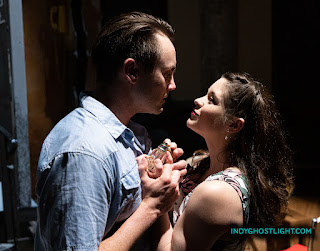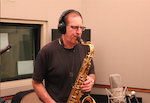Substantial repertoire brings three-week ISO Classical Series concentration to a pause
The Indianapolis Symphony Orchestra this weekend welcomes the return of the multifaceted
 |
| Joseph Young connected well in a Romantic program. |
Awadagin Pratt as piano soloist for a program conducted by Joseph Young, music director of the Berkeley (Calif.) Symphony, who is making his local debut.
Friday's concert was a display of solid rapport between the guests, as well as a display of the ISO's fitness to respond as it enters a period of solid partnership with its eighth music director, Jun Märkl.
A large, youthful crowd got initial exposure to a Romantic work by the biracial British composer Samuel Coleridge-Taylor. The 1898 piece, Ballade in A minor, op. 33, encompasses the emotional drift and implied narrative of the fantasy-rooted form that provided the work's name.
It makes a full circle from an assertive opening, engaging the full orchestra, before passing through a gorgeous violin tune and some frisky episodes. The orchestra responded well to Young's large-gestured manner.
That expansive style, with a clear beat that unmistakably conveyed the sweep of major 19th-century repertoire, got full display after intermission in Dvorak's Symphony No, 7 in D minor. The smooth melding of wind and string sonorities in the rhythmically lively Scherzo was exemplary, with a fine succession of solo winds (oboe, bassoon, clarinet, flute) to conclude the movement. The last movement glowed and pranced, with its energy magnificently gathered as the mode shifts from minor to major in the final measures.
 |
| Awadagin Pratt also gave a master class at Butler |
Pratt's appearance crowned the concert's first half. Among piano soloists, a Yamaha artist is a rarity. The instrument has a bell-like sonority, with a huge resonance on the bass end of the spectrum. The piano's gentler side ruled the slow movement conspicuously, with an extra degree of thoughtfulness cast over the pianissimo phrases. The slowing at the conclusion seemed excessive, however.
Expressiveness with a dramatic emphasis sounded just right in the finale, and the tension built nobly. The conductor, who had shaped the long tutti in the first movement with one linked phrase after another, likewise made the most of such connectedness in helping Pratt bring the concerto to an exciting conclusion.
Called back for an encore, Pratt offered an unusual interpretation of Francois Couperin's "Les barricades mysterieuses." As if using a musical soldering gun, Pratt melted the work's obsessive phrases together. Let's set aside the fact that this is a harpsichord piece, he seemed to be saying. It worked as an exercise in keyboard aesthetics, but once was enough.



Comments
Post a Comment